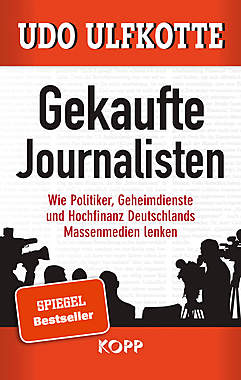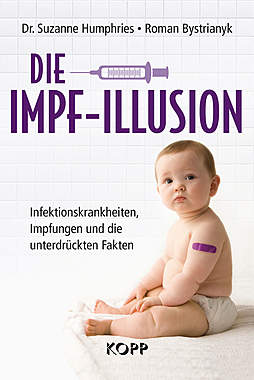- zum Wochenende: risk and reward - alberich, 16.03.2007, 21:23
zum Wochenende: risk and reward
-->The incredible irony of what we've seen in the past few days is that most
investors almost always do exactly the wrong thing, from a rational
perspective, when confronted with"decisions under risk." This shouldn't
be that surprising, though.
Human beings, under the duress of fast-moving global financial markets
with dozens of virtually untrackable variables, are programmed by nature
to do two things. First, they freeze, the way our ancestor used to do on
African savannah's thousands of years ago when they saw a big cat on the
horizon. You can thank the amygdale, which takes control of the brain at
these crucial times, pulling rank on the thoughtful frontal lobes that
otherwise makes us distinct as primates.
This temporary coup-de-brain is nature's way of by-passing the frontal
lobes to arrest our action before we do something stupid like running for
our lives and attracting a lot of attention from other predators. Panic
does not promote survival. It's this freeze in our musculature that gives
us enough time to tense up our muscles and either fight, or flee.
The second thing human beings do when confronted with risk is seek the
action which has the largest possible negative effect on them. Yes, you
read that correctly. And here we apologize for getting a bit statistically
geeky on you. But as this is The Daily Reckoning, we are pretty sure you
won't read this explanation for market behaviour anywhere else. From a
novelty perspective at least, it should be worth your time.
The explanation takes us back to that crucially important year in
financial history 1979. That was the year Daniel Khaneman and Amos Tversky
published the second most cited economics article in academic history,
"Prospect Theory: An Analysis of Decision Under Risk."
The paper was a landmark in the understanding of human behavior because it
pointed out the tawdry little lie at the heart of classical economic
models about human behaviour, namely that people weigh risks with perfect
information and then make rational decisions. Wrong! Homo economicus is a
complete fiction.
What Khaneman and Tversky showed is that people make two kinds of
decisions with respect to risk and reward, and that neither decision is
rational. One the reward side, investors tend to overweight certain
outcomes, choosing lower returns with higher probabilities over higher
returns with lower probabilities. Or, in layman's terms, most investors
prefer the appearance of certain, predictable, single-digit returns from
blue chip stocks or bonds than the higher but lower probability returns
from say, small cap stocks or emerging market bonds.
That investors would over-weight outcomes that are considered certain
isn't that surprising. It suggests that capital preservation is
psychologically (and financially) more important to investors, than
capital growth. The difference today may be that investors-at least the
retiring Boomers in the West who make up the bulk of the market-need big
capital gains in the next few years to increase their retirement income.
This may cause them to take more risk (to make up for past losses) than
would ideally be appropriate at this stage in their investment career. But
you go to war with the Army you've got, don't you?
What's really shocking from Kahneman and Tversky's paper is how investors
approach losses. And the conclusion is inescapable: investors seek it. Or,
as the paper puts it,"This analysis suggests that a person who has not
made peace with his losses is likely to accept gambles that would be
unacceptable to him otherwise. The well known observation that the
tendency to bet on long shots increases in the course of the betting day
provides some support for the hypothesis that a failure to adapt to losses
or to attain an expected gain induces risk seeking."
And here we thought investors were seeking alpha, and that global risk
premiums were converging toward zero. But no! What you're really seeing is
more bets on long-shots. This is, in the paper's own terms, a failure to
adapt to the very risky world we invest in. But then again, investors are
only people. And this means that in the coming years, we can expect
investors not to avoid wealth-destroying behaviours and investment
decisions, but to greedily seek them out.
Incidentally, Bill Bonner has a theory about this, which he hasn't given
an official name to. His theory is geopolitical, that it is the nature of
large institutions (like empires) to find a way to destroy themselves,
that they must do so. Surpluses of any sort (financial, political,
caloric) are un-natural. Human beings, as every good student of Greek and
financial tragedies knows, find spectacular ways to squander their good
fortune.
Tversky and Khaneman show that faced with a choice between a
low-probability but high-magnitude loss on the one hand, and
higher-probability but lower magnitude loss on the other hand, human
beings tend to choose the higher magnitude loss with the lower
probability. Or, in layman's terms, that means if you were faced with the
choice of a certain loss of $20 or the 30 percent probability of losing
$60, you, if you were like most of the other featherless bipeds on the
planet, would choose the 30 percent probability of losing $60.
It does make sense with a weird kind of emotional logic. Faced with the
certain loss of $20 or the possible loss (one chance in three) of losing
three times as much, investors take the lower probability, higher
magnitude event.
But when you apply this statistical, empirical, and psychological finding
to the markets-and here we mean equity markets writ large on a global
scale, reacting to one another in real-time-the result is stunning. It
means you can expect to see people engage in riskier and riskier
behaviour, nearly always choosing bigger losses over smaller losses.
"But wait!," you shout."You're forgetting about probabilities. Why choose
a certain loss over a probably loss?
Good question. But perhaps our notion of probable losses is wrong as well.
Investors are operating under the assumption that larger losses in today's
markets are lower probability events. There is also a wide-spread believe
that the larger the markets get and more integrated they become, the lower
probability of really gut-wrenching losses. The problem with this academic
theory is that it is exactly, emphatically, categorically, wrong.
The theory we refer to is that market crashes are statistically rare and
can be modeled on a bell curve, with a standard distribution of price
movements. Most movements, in a classic bell curve, would be within one or
two standard deviations of the mean. Or, in stock market terms, there
would be only a few instances when the market produced dramatically above
average or below average returns. Most returns would be rather mundane,
and rather predictable. There would be few crashes and fewer still triple
digit gains. But the evidence suggests otherwise.
"From 1916 to 2003," Benoit Mandelbrot writes in The Misbehaviour of
Markets,"the daily index movements of the Dow Jones Industrial Average do
not spread out on graph paper like a simple bell curve. The far edges
flare too high: too many big changes. Theory suggests over that time,
there should be fifty-eight days when the Dow moved more than 3.4 percent;
in fact, there were 1,001. Theory predicts six days of index swings beyond
4.5 percent; in fact there were 366. And index swings of more than 7
percent should come once every 300,000 years; in fat, the twentieth
century saw forty-eight such days. Truly, a calamitous era that insists on
flaunting all predictions. Or, perhaps, our assumptions are wrong."
And what about this new era, dear reader? When you combine Mandelbrot's
observation with Kahneman and Tversky, you get a picture of increased
volatility and risk-seeking behavior. People, faced with more to lose,
risk ever more.
Quelle: dailyreckoning.com
und zur Entspannung - das rockt - ![[image]](img/smilies/applaus.gif)
<ul> ~ Lautsprecherknopf nach rechts drehen!!</ul>
gesamter Thread:
 Mix-Ansicht
Mix-Ansicht

